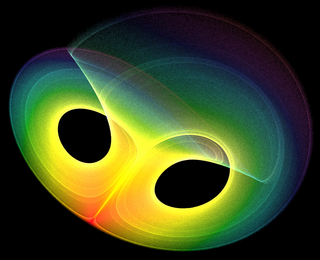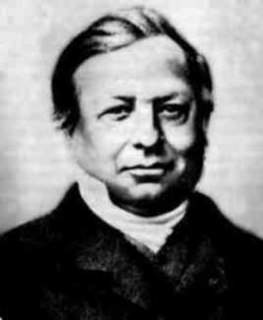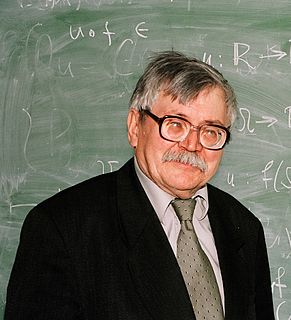
Complex analysis, traditionally known as the theory of functions of a complex variable, is the branch of mathematical analysis that investigates functions of complex numbers. It is useful in many branches of mathematics, including algebraic geometry, number theory, analytic combinatorics, applied mathematics; as well as in physics, including the branches of hydrodynamics, thermodynamics, and particularly quantum mechanics. By extension, use of complex analysis also has applications in engineering fields such as nuclear, aerospace, mechanical and electrical engineering.

In mathematics, a topological group is a group G together with a topology on G such that the group's binary operation and the group's inverse function are continuous functions with respect to the topology. A topological group is a mathematical object with both an algebraic structure and a topological structure. Thus, one may perform algebraic operations, because of the group structure, and one may talk about continuous functions, because of the topology.

In mathematics, mathematical physics and the theory of stochastic processes, a harmonic function is a twice continuously differentiable function f : U → R where U is an open subset of Rn that satisfies Laplace's equation, i.e.

In mathematics, particularly in complex analysis, a Riemann surface is a one-dimensional complex manifold. These surfaces were first studied by and are named after Bernhard Riemann. Riemann surfaces can be thought of as deformed versions of the complex plane: locally near every point they look like patches of the complex plane, but the global topology can be quite different. For example, they can look like a sphere or a torus or several sheets glued together.
In mathematics, conformal geometry is the study of the set of angle-preserving (conformal) transformations on a space.
In differential geometry, the Atiyah–Singer index theorem, proved by Michael Atiyah and Isadore Singer (1963), states that for an elliptic differential operator on a compact manifold, the analytical index is equal to the topological index. It includes many other theorems, such as the Riemann–Roch theorem, as special cases, and has applications in theoretical physics.
The theory of functions of several complex variables is the branch of mathematics dealing with complex valued functions
In the mathematical field of complex analysis, Nevanlinna theory is part of the theory of meromorphic functions. It was devised in 1925, by Rolf Nevanlinna. Hermann Weyl has called it "one of the few great mathematical events of century." The theory describes the asymptotic distribution of solutions of the equation f(z) = a, as a varies. A fundamental tool is the Nevanlinna characteristic T(r, f) which measures the rate of growth of a meromorphic function.
In the theory of several complex variables and complex manifolds in mathematics, a Stein manifold is a complex submanifold of the vector space of n complex dimensions. They were introduced by and named after Karl Stein (1951). A Stein space is similar to a Stein manifold but is allowed to have singularities. Stein spaces are the analogues of affine varieties or affine schemes in algebraic geometry.
In mathematics, infinite-dimensional holomorphy is a branch of functional analysis. It is concerned with generalizations of the concept of holomorphic function to functions defined and taking values in complex Banach spaces, typically of infinite dimension. It is one aspect of nonlinear functional analysis.

In mathematics, a manifold is a topological space that locally resembles Euclidean space near each point. More precisely, each point of an n-dimensional manifold has a neighbourhood that is homeomorphic to the Euclidean space of dimension n. In this more precise terminology, a manifold is referred to as an n-manifold.

In mathematics, a differentiable manifold is a type of manifold that is locally similar enough to a linear space to allow one to do calculus. Any manifold can be described by a collection of charts, also known as an atlas. One may then apply ideas from calculus while working within the individual charts, since each chart lies within a linear space to which the usual rules of calculus apply. If the charts are suitably compatible, then computations done in one chart are valid in any other differentiable chart.
In mathematics, plurisubharmonic functions form an important class of functions used in complex analysis. On a Kähler manifold, plurisubharmonic functions form a subset of the subharmonic functions. However, unlike subharmonic functions plurisubharmonic functions can be defined in full generality on complex analytic spaces.
In mathematical complex analysis, a quasiconformal mapping, introduced by Grötzsch (1928) and named by Ahlfors (1935), is a homeomorphism between plane domains which to first order takes small circles to small ellipses of bounded eccentricity.
In mathematics, subharmonic and superharmonic functions are important classes of functions used extensively in partial differential equations, complex analysis and potential theory.
Geometric function theory is the study of geometric properties of analytic functions. A fundamental result in the theory is the Riemann mapping theorem.
In mathematics, the distortion is a measure of the amount by which a function from the Euclidean plane to itself distorts circles to ellipses. If the distortion of a function is equal to one, then it is conformal; if the distortion is bounded and the function is a homeomorphism, then it is quasiconformal. The distortion of a function ƒ of the plane is given by
In mathematical analysis, Zorich's theorem was proved by Vladimir A. Zorich in 1967. The result was conjectured by M. A. Lavrentev in 1938.
In mathematics, a quasicircle is a Jordan curve in the complex plane that is the image of a circle under a quasiconformal mapping of the plane onto itself. Originally introduced independently by Pfluger (1961) and Tienari (1962), in the older literature they were referred to as quasiconformal curves, a terminology which also applied to arcs. In complex analysis and geometric function theory, quasicircles play a fundamental role in the description of the universal Teichmüller space, through quasisymmetric homeomorphisms of the circle. Quasicircles also play an important role in complex dynamical systems.
Bloch's Principle is a philosophical principle in mathematics stated by André Bloch.













